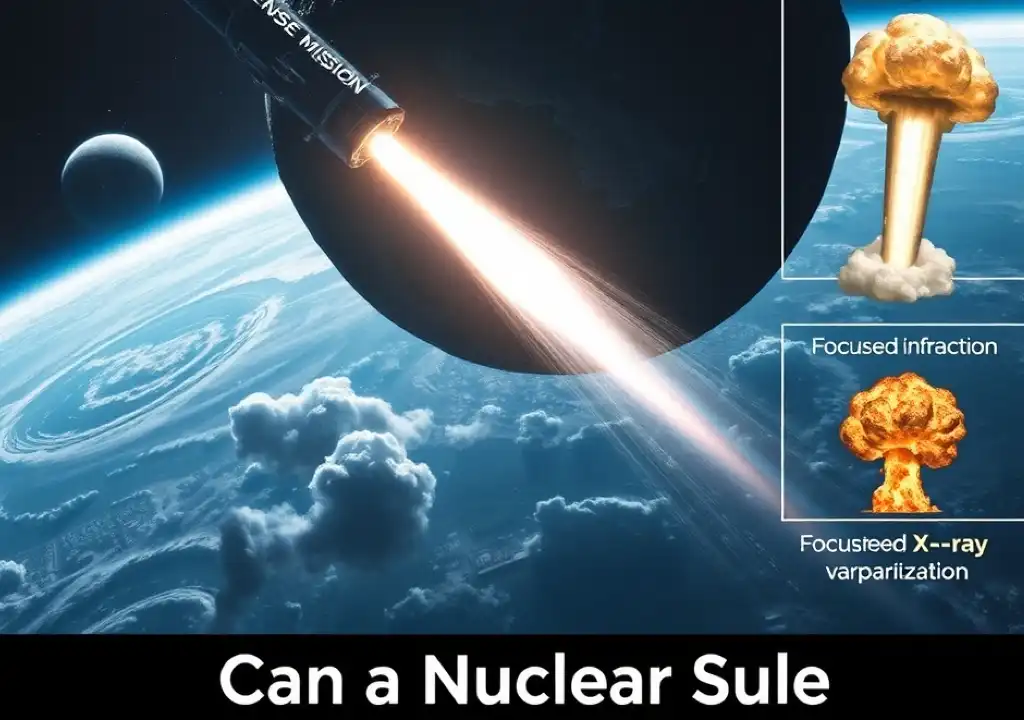It’s been almost 25 years since Bruce Willis, playing Harry Stamper in Armageddon, heroically saved Earth from an asteroid in a dramatic nuclear explosion. Now, scientists may have discovered that such a solution could be viable for real. In a recent study published in Nature Physics, researchers from Sandia National Laboratories have simulated the potential of using nuclear X-ray pulses to divert an asteroid and avoid a catastrophic collision with Earth.
How the Experiment Worked
In the experiment at Sandia National Laboratories, scientists used a powerful radiation machine called the Z machine to generate X-ray pulses. This machine can produce magnetic fields and intense X-rays. To generate the X-ray pulse, researchers directed an electrical burst at argon gas, causing it to implode and transform into plasma. The plasma then emitted X-rays aimed at a target, simulating the effects of a nuclear explosion in space.
The scientists replicated space-like conditions in a vacuum, directing the X-ray pulses at an asteroid-like rock. The pulses vaporized part of the surface, propelling material away from the asteroid and nudging it in the opposite direction, demonstrating how a burst of energy could potentially alter the trajectory of a space rock.
Dr. Nathan Moore, the study’s lead author, explained that achieving this requires an immense concentration of power—around 80 trillion watts—into a small area to create plasma hot enough to vaporize material from the asteroid’s surface and shift its path.
Nuclear X-Ray Pulse vs. Traditional Nuclear Blast
While this experiment is a breakthrough, it differs from the traditional method of planting a nuclear bomb on an asteroid. If a bomb were detonated on the asteroid, it could break the rock into smaller fragments, potentially causing multiple impacts rather than preventing them. The X-ray method, however, vaporizes material from the asteroid’s surface, changing its course without fragmenting it into smaller dangerous pieces.
Previous Attempts to Alter Asteroid Trajectories
Although altering an asteroid’s path sounds like science fiction, it has been attempted before. In 2021, NASA’s Double Asteroid Redirection Test (DART) successfully crashed a spacecraft into the asteroid Dimorphos to test whether a collision could change its orbit. Fortunately, Dimorphos posed no threat to Earth but provided valuable insights into potential future asteroid defense methods.
How Close Are Asteroids to Earth?
Asteroids occasionally pass close to Earth. Recently, an asteroid called 2024 ON, measuring 290 meters, safely passed Earth at a distance of nearly 1 million kilometers. While not a direct threat, Near-Earth Objects (NEOs) are closely monitored for any potential risks. For example, in 2004, the asteroid 99942 Apophis, dubbed “God of Destruction,” was initially thought to pose a threat but will now pass Earth in 2029 at a safe distance.
The Ethics of Using Nuclear Energy in Space
As scientists explore ways to divert asteroids, questions arise about the ethics and regulation of using nuclear energy in space. If the technology behind nuclear X-ray pulses were developed, it could resemble weapons of mass destruction due to the potential for powerful, indiscriminate blasts. Experts believe that, similar to nuclear power regulation on Earth, a global framework would need to be established to control access to such technology.
David Blunt, a lecturer in international relations, noted that nuclear energy used for planetary defense could be weaponized, which raises concerns about who controls this power. Regulatory bodies, like NASA’s Planetary Defense Coordination Office and UN-supported organizations, would need to monitor the use of such technology to ensure it isn’t misused.
Conclusion
While scientists are making strides in developing methods to defend Earth from potential asteroid impacts, the road ahead involves both scientific and ethical challenges. As the technology progresses, it’s crucial to establish frameworks for its safe use and regulation. The possibility of using nuclear technology to change the course of an asteroid is closer to reality, but the implications of such power must be handled with great caution.

